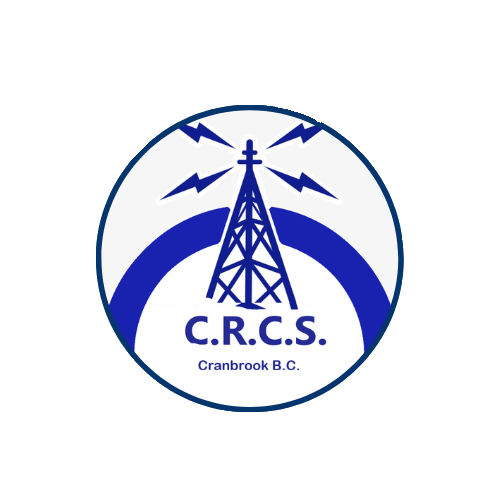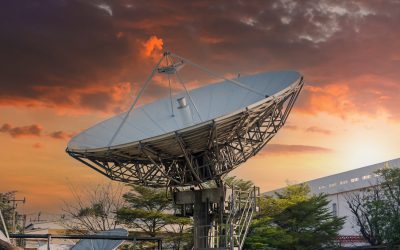Radio communication is a fundamental aspect of modern technology, spanning applications from amateur radio and broadcasting to satellite and mobile networks. One of the most crucial yet often overlooked factors in radio wave propagation is polarization. Understanding polarization in radio waves is essential for optimizing signal clarity, reducing interference, and ensuring effective transmission and reception. In this blog, we will explore what polarization is, its types, how it affects radio signals, and practical applications in various fields.
What is Polarization in Radio Waves?
Polarization refers to the orientation of the electric field vector of an electromagnetic wave as it propagates through space. In simpler terms, it describes the direction in which the wave oscillates. Since radio waves consist of electric and magnetic fields perpendicular to each other, polarization is determined by the direction of the electric field relative to the Earth’s surface.
When transmitting a radio signal, it is vital to match the polarization of the transmitting and receiving antennas to maximize signal strength and minimize losses. Mismatched polarization can result in significant signal degradation, making an understanding of polarization crucial for efficient radio communication.
Types of Polarization in Radio Waves
There are three primary types of radio wave polarization:
1. Linear Polarization
Linear polarization occurs when the electric field vector oscillates along a single plane. This type of polarization can be further categorized into:
- Horizontal Polarization (HP): The electric field oscillates parallel to the ground. This type is commonly used in television broadcasting and some amateur radio applications.
- Vertical Polarization (VP): The electric field oscillates perpendicular to the ground. It is widely used in FM radio, VHF/UHF communications, and mobile networks.
2. Circular Polarization
Circular polarization occurs when the electric field rotates in a helical pattern as the wave propagates. It can be:
-
Right-Hand Circular Polarization (RHCP)
-
Left-Hand Circular Polarization (LHCP)
This type of polarization is useful in satellite communications and space applications since it minimizes signal degradation caused by the Earth’s ionosphere and atmospheric conditions.
3. Elliptical Polarization
Elliptical polarization is a combination of linear and circular polarization, where the electric field follows an elliptical path. It can occur when there is a phase difference between two orthogonal components of the electric field. This type of polarization is often encountered in complex communication environments where signals undergo multipath propagation.
How Polarization Affects Radio Signals
1. Signal Strength and Reception
The alignment between the transmitting and receiving antennas’ polarization significantly impacts signal strength. If the polarization is mismatched (e.g., a vertically polarized antenna receiving a horizontally polarized signal), significant signal loss can occur, sometimes exceeding 20 dB.
2. Multipath Interference
Multipath interference occurs when signals reflect off surfaces such as buildings, water bodies, and terrain. These reflections can alter the polarization of the wave, causing reception issues and signal fading. Circular polarization can help mitigate these issues as it is less affected by reflections.
3. Atmospheric and Ionospheric Effects
The Earth’s ionosphere can alter radio wave polarization, particularly at HF (high-frequency) bands. Circular polarization is often used in satellite communications to counteract these changes and maintain reliable signal transmission.
4. Cross-Polarization Interference
Cross-polarization interference happens when signals with different polarizations overlap in the same frequency band. This interference can degrade communication quality, particularly in satellite and microwave links. Proper polarization alignment and filtering techniques can reduce this issue.
Applications of Polarization in Different Fields
1. Amateur Radio and Broadcasting
Amateur radio operators often use both vertical and horizontal polarization depending on their mode of operation and frequency band. HF bands frequently use horizontal polarization for long-distance communications, while VHF/UHF repeaters typically employ vertical polarization for better coverage.
In broadcasting, FM radio uses vertical polarization to accommodate mobile receivers, whereas television broadcasts often employ horizontal polarization to reduce ground reflections.
2. Mobile and Wireless Communications
Cellular networks use a combination of vertical and cross-polarized antennas to enhance signal reception and mitigate interference. MIMO (Multiple Input Multiple Output) technology, widely used in 4G and 5G networks, leverages polarization diversity to improve data rates and connectivity.
3. Satellite Communications
Satellite signals often employ circular polarization to counteract ionospheric effects and ensure consistent reception regardless of the receiver’s orientation. GPS signals, for example, use right-hand circular polarization (RHCP) to maintain accuracy in navigation systems.
4. Radar and Military Applications
Radar systems utilize different polarizations to distinguish between objects and improve detection capabilities. For instance, dual-polarization radar can differentiate between rain, snow, and hail, providing more accurate weather predictions. Military applications also use polarization control to minimize signal jamming and improve stealth capabilities.
5. Space Communications
Interplanetary missions and deep-space probes use circularly polarized antennas to maintain consistent communication with Earth, as the orientation of spacecraft can change unpredictably during their missions.
Optimizing Antenna Polarization for Better Performance
1. Matching Transmit and Receive Polarization
For optimal signal reception, ensure that the transmitting and receiving antennas have the same polarization. A mismatch can result in severe signal loss.
2. Using Dual-Polarized Antennas
Many modern communication systems use dual-polarized antennas capable of simultaneously receiving horizontal and vertical signals. This design helps mitigate interference and improve signal reliability.
3. Implementing Polarization Diversity
Polarization diversity involves using multiple antennas with different polarizations to improve signal reception in challenging environments, such as urban areas with high multipath interference.
4. Adjusting for Environmental Factors
Understanding the effects of terrain, buildings, and atmospheric conditions on polarization can help optimize antenna placement and orientation.
Polarization in radio waves plays a vital role in ensuring efficient signal transmission and reception across various applications. Whether in amateur radio, broadcasting, mobile networks, or satellite communications, understanding and optimizing polarization can enhance communication reliability, reduce interference, and improve overall performance.
By leveraging the principles of polarization, radio operators and engineers can design more effective communication systems, ensuring strong and consistent signal quality in diverse environments. As technology advances, further research into polarization techniques will continue to shape the future of wireless communication.




